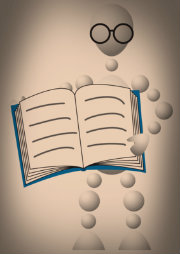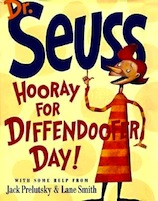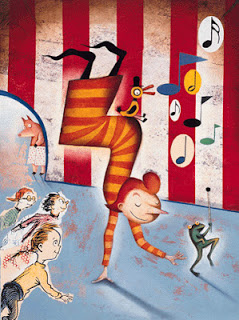In the Spring a Teacher’s Focus Turns to Thoughts of Testing
A MiddleWeb Blog

I have administered the statewide standardized test since the spring of my first year as a teacher. It was called the ESPA then. It had been adopted two years earlier. According to the New Jersey state legislature, it was one component in a larger goal that would be used to “provide to all children…regardless of socioeconomic status or geographic location, the educational opportunity which will prepare them to function politically, economically and socially in a democratic society.”
The adoption of the ESPA coincided with the adoption of the Core Curriculum Content Standards (CCCS). These standards were established to identify “what all New Jersey students should know and be able to do by the end of the fourth and eighth grades, and upon completion of a New Jersey public school education.” Essentially, the state said it wanted to “establish uniform standards of minimum achievement in basic communication and computational skills.” This made sense to me as a first year teacher.
Learning on the job

The idea that I needed to keep the tests safe was made quite clear by the line outside my principal’s office that first Monday. The same holds true today. For some reason I don’t seem to feel the same level of angst I did then, even though I now have a better idea of what the results are actually being used for. To me, the state’s use of test scores is more reminiscent of a Jackson Pollock abstract, rather than a work of Realism, which can be defined as the attempt to represent subject matter truthfully.
As I first year teacher, it was my understanding that we were testing kids to see how well they were learning, and to use the data from these test results to track student progress as each matured and developed as a learner. As my knowledge base grows, however, it seems like these numbers are being used for a much different purpose as well.
Sixteen years later, my questions are redirected
Advancements in technology have made it easy to communicate results efficiently (there were no bar-coded labels back in 1998). But how are these test scores being used?…Now, there’s an Essential Question that needs looking into…
My schema is developing, and this often results in deeper frustration at the misuse of judgment within public education. My questions are ever-changing, as “new assessment” models and methods are created. Is the state’s spiraling curriculum, the goal of which is to develop meaningful assessments of student learning, spiraling out of control?
Following directions

Kids ask questions. I do my best to encourage them with a “Read the question carefully, and do your best to answer it” or an “I can’t really help you, kiddo, but take a deep breath and go back to it. See if you can figure it out.”
Many of my students get nervous about their performance. It is my job to reassure them. Truth be told, I’m not overly concerned about my own students’ performance. They are all doing pretty well, and they seem to be happy to be learning.
But as I walk around the room this week, I know I will be formulating questions that I would like answered; most notably, “Where is the authentic assessment in any of this?”
Some other questions for the canvas:
► Why do our school test scores include performance data from students who are not being taught by teachers who work at our school?
►How accurate an assessment of my performance will the state get through the use of a SMID number? What would George Orwell think of this?
► Who decided what the mathematical formula should be that my district is using to align student results in an effort to define my level of success as a teacher?
► Who are the people who read the kids’ stories and essays and decide how well they write? Have they been formally trained on how to use the state rubric? How long did the training last? And aout how long do they spend reading and assessing each individual writing piece? Are they teachers?
As I formulate more questions, I formulate new frustrations. This splattered, seemingly disconnected canvas is becoming a picture I don’t like. There’s a need for artistry like that of Mr. Pollock in our world, but not when it comes to standardized testing.
So what to do?

Once again, I will ask Theodor Geisel and his helpers for a little inspiration to remind the kids that they will do just fine, that they’re prepared, and that they are more than capable of showing what they know.
Miss Bonkers says it best when she assures her class with these simple words,
“Don’t fret!…
You’ve learned the things you need
To pass that test and many more –
I’m certain you’ll succeed.
We’ve taught you that the earth is round,
That red and white make pink,
And something else that matters more –
We’ve taught you how to think.”
They’re good kids. They understand the wisdom in this.

Anne Minski, a friend and colleague, sent me these 13 tips from the Love, Teach blog to stir my creativity, make me laugh, and help me keep things in perspective.
I never want to live in dreary Flobbertown. Thanks, Anne.



































Thank you for sharing your story. “Authentic assessment” is the worst phrase, a dangerous false syllogism, paralogic.
They made it through Day One!…and, thankfully, the afternoon felt very authentic,..Now I’m wondering if “authentic assessment” could be seen as an oxymoron in this instance…hmm…
I think that phrases like “authentic assessment” may arise as pushbacks against the (orwellian?) appropriation of key words by policymakers and marketers. In this case, if they seize “assessment,” somehow we have to communicate that what they’re purveying is not assessing the real stuff of learning.